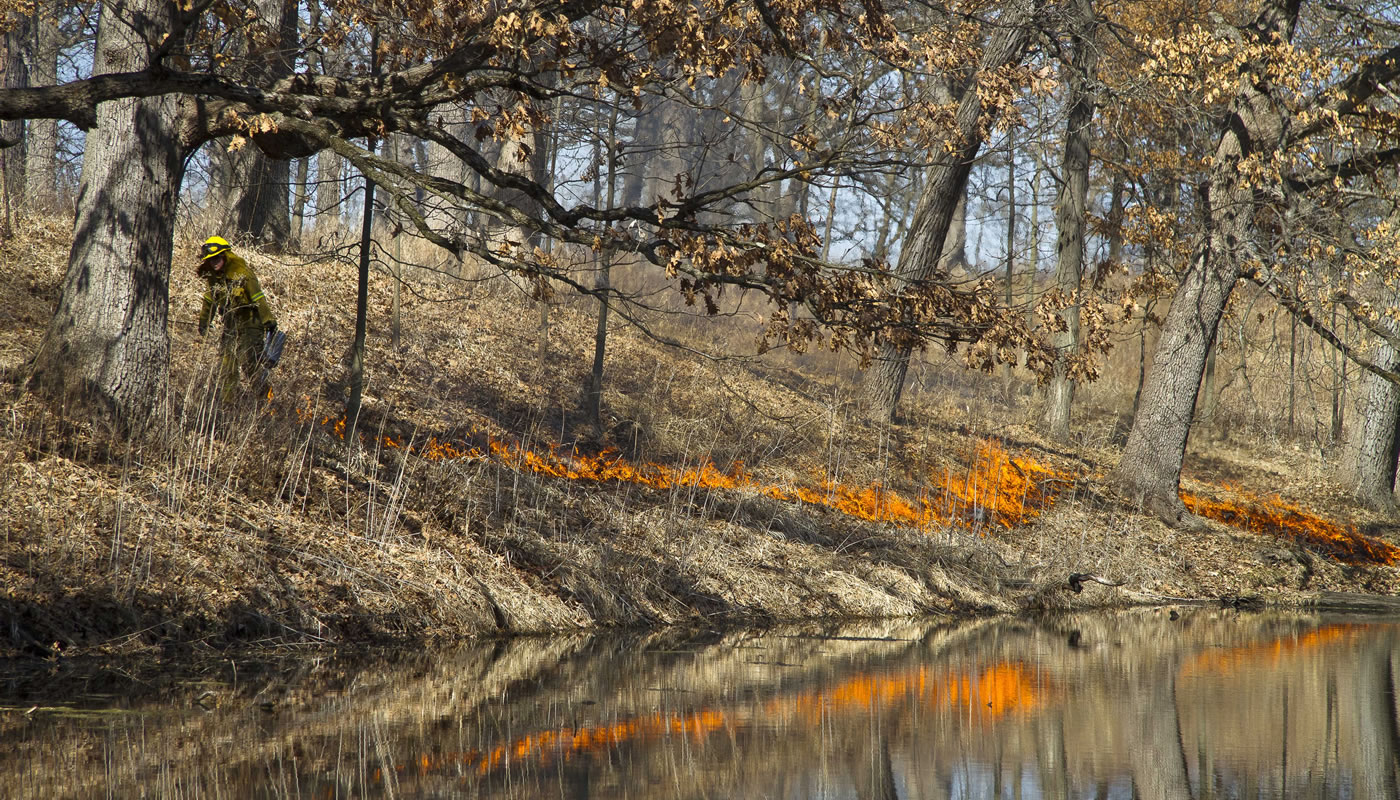For most people, hearing the phrase “forest fire” conjures images of infernos consuming entire mountainsides of conifers in the arid southwestern United States (or, in the last few days, news reports of smaller wildfires on the East Coast). But the common reality here in Cook County is that a woodland fire—especially on a prescribed burn conducted when conditions are optimal for safety—is most often a gentle sort of creature.
Because the ground layer of vegetation and duff is often shorter and more sparse than in, say, a prairie, and because the winds are generally calmer than out in the open, a fire here will most typically fill the woods with a pleasant crackle, the flames advancing an inch or two here, an inch or two there, meandering where it will until it sputters out at a firebreak.
The fire is, in a sense, the first bright color of spring. It leaves in its wake a black bed of rich nutrients to be followed, sometimes in only a day or two but usually several weeks or more, by a rich resurgence of bright green plant life.
This spring, due to unusually warm temperatures in March, burn crews started three weeks earlier than normal. With highs reaching into the 80s, they headed out earlier than usual each morning before the days became too warm. In some locations, the season closed early to limit negative impacts to flora and fauna that were also emerging early. By season’s close, 86 locations received burns.
The Forest Preserve District conducts prescribed burns with properly trained staff and contractors under state and county permits, and only during weather conditions that allow for a safe and prescribed operation.

